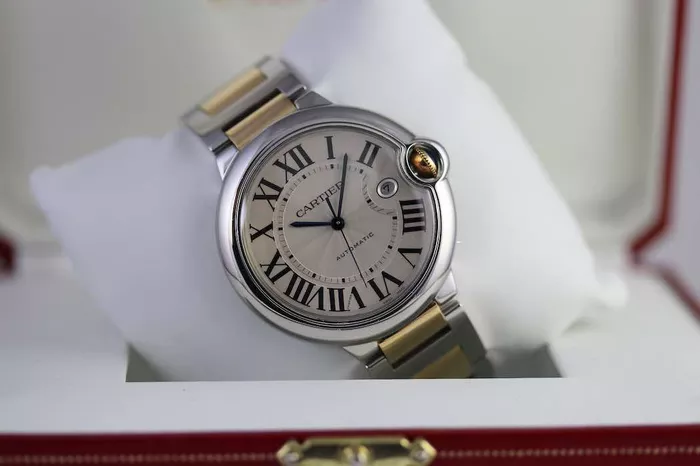The world of high-end watches is fascinating, with each brand offering its own unique blend of craftsmanship, technology, and design. Among luxury watchmakers, Cartier stands out as a renowned name known for its exquisite timepieces. One area of particular interest is Cartier’s quartz movements, which offer precision and reliability. This article delves into the intricacies of Cartier quartz movements, exploring who makes them, their history, and their impact on the watch industry.
Introduction to Cartier Quartz Movements
Cartier, founded in 1847, is celebrated for its elegant and innovative watch designs. While Cartier is well-known for its mechanical watches, its quartz movements also play a crucial role in its lineup. Quartz movements are favored for their accuracy and low maintenance compared to mechanical movements. Understanding who makes Cartier quartz movements involves exploring both Cartier’s in-house capabilities and its relationships with external suppliers.
Historical Context of Cartier Quartz Movements
Early Adoption of Quartz Technology
Cartier began exploring quartz technology in the 1970s, a period marked by the “Quartz Crisis” or “Quartz Revolution.”
The brand’s entry into quartz movements was part of a broader industry trend toward precision and affordability.
The Introduction of the Cartier Quartz Watch
Cartier launched its first quartz watch in the 1970s, reflecting the industry’s shift towards battery-powered timekeeping.
The adoption of quartz technology allowed Cartier to offer a new level of accuracy and convenience.
Cartier’s In-House Quartz Movements
Development and Production
Cartier has developed and produced its own quartz movements in-house to ensure quality and exclusivity.
The brand’s commitment to in-house movements reflects its dedication to maintaining high standards and innovation.
Notable In-House Quartz Movements
Caliber 157: Used in models such as the Cartier Ballon Bleu, known for its slim profile and accuracy.
Caliber 1904: Found in the Cartier Roadster, showcasing Cartier’s capability to blend quartz technology with design aesthetics.
Advantages of In-House Movements
Quality Control: Ensures that Cartier maintains high standards throughout the production process.
Customization: Allows for the creation of unique movements tailored to Cartier’s specific designs and requirements.
External Suppliers of Cartier Quartz Movements
Partnerships with Swiss Movement Manufacturers
Cartier collaborates with various Swiss movement manufacturers to source quartz movements.
Notable suppliers include companies like ETA, known for their reliable and precise quartz movements.
Notable External Movements Used by Cartier
ETA Movements: ETA is a well-known Swiss manufacturer providing movements that Cartier has used in some of its quartz watches.
Ronda Movements: Another supplier, Ronda, has provided movements for Cartier’s timepieces, known for their durability and accuracy.
Impact of External Suppliers
Consistency: External suppliers help Cartier maintain a high level of consistency and reliability in its quartz movements.
Innovation: Collaborations with external suppliers bring new technologies and innovations to Cartier’s quartz watches.
Technical Aspects of Cartier Quartz Movements
Accuracy and Precision
Quartz movements are renowned for their accuracy, with deviations typically within a few seconds per month.
Cartier’s quartz movements uphold this standard, ensuring precise timekeeping.
Power Reserve
Quartz movements generally have longer power reserves compared to mechanical movements.
Cartier’s quartz watches benefit from extended battery life, reducing the need for frequent maintenance.
Maintenance and Durability
Quartz movements require minimal maintenance compared to their mechanical counterparts.
Cartier’s quartz watches are designed for durability, with robust construction and reliable components.
Cartier’s Innovations in Quartz Technology
Advanced Quartz Movements
Cartier continually invests in research and development to enhance its quartz technology.
Innovations include improved battery life, enhanced accuracy, and integration with modern technology.
Smart Quartz Movements
Cartier has explored the integration of smart technology into its quartz movements.
This includes features like Bluetooth connectivity and advanced functionality, blending traditional watchmaking with modern technology.
See Also: Which Cartier Watch Is A Good Investment
The Impact of Quartz Movements on Cartier’s Collection
Diverse Range of Models
Cartier’s quartz movements are featured in a wide range of models, from classic designs to contemporary styles.
Notable models include the Cartier Tank, Ballon Bleu, and Roadster, showcasing the versatility of quartz movements.
Appeal to Different Audiences
Quartz movements make Cartier’s watches accessible to a broader audience due to their affordability and practicality.
The precision and reliability of quartz movements appeal to those seeking a high-quality timepiece with minimal upkeep.
Complementing Mechanical Watches
Cartier’s quartz watches complement its mechanical collections, offering a diverse range of timepieces to suit various preferences.
The combination of quartz and mechanical watches highlights Cartier’s commitment to excellence in all aspects of watchmaking.
Challenges and Considerations
Perception vs. Mechanical Watches
Quartz movements can sometimes be perceived as less prestigious compared to mechanical movements.
Cartier addresses this by emphasizing the quality and precision of its quartz watches, ensuring they meet the brand’s high standards.
Technological Advancements
As technology evolves, Cartier must stay ahead of trends and innovations in quartz movements.
The brand continues to explore new technologies and partnerships to maintain its position as a leader in the watch industry.
Conclusion
Cartier’s approach to quartz movements reflects a commitment to precision, reliability, and innovation. By combining in-house expertise with partnerships with leading Swiss movement manufacturers, Cartier offers a range of high-quality quartz watches that appeal to discerning customers. As the watch industry continues to evolve, Cartier’s dedication to excellence in quartz technology ensures its place at the forefront of luxury timepieces.
Whether through in-house developments or collaborations with external suppliers, Cartier’s quartz movements represent a blend of tradition and modernity, embodying the brand’s enduring legacy in the world of horology.

